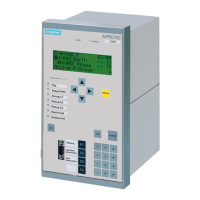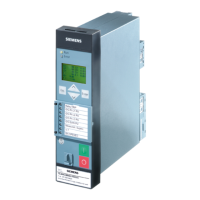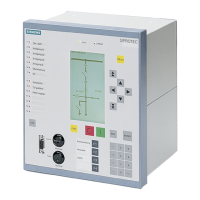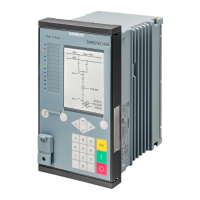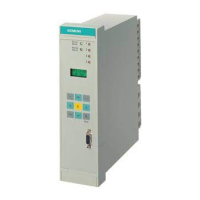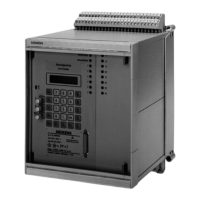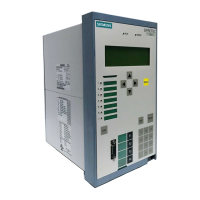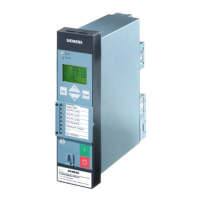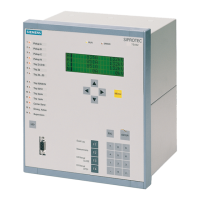2.1 General
43
7SD610 Manual
C53000-G1176-C145-4
advantage. Set the correct vector group of the transformer according to the above-
mentioned considerations.
Address 1162 VECTOR GROUP I is therefore relevant for the differential protection
whereas address 1161 VECTOR GROUP U serves as a basis for the calculation of the
measured voltages beyond the transformer.
Address 1163 TRANS STP IS is used to set whether the power transformer starpoint
facing the device is earthed or not. If the starpoint is grounded, the device will eliminate
the zero sequence current of the relevant side, since this zero sequence current may
cause a spurious tripping in case of a ground fault outside of the protected zone.
Circuit Breaker
Status
Information regarding the circuit breaker position is required by various protection and
supplementary functions to ensure their optimal functionality. The device has a circuit
breaker status recognition which processes the status of the circuit breaker auxiliary
contacts and contains also a detection based on the measured currents and voltages
for opening and closing (see also Section 2.16.1).
In address 1130 the residual current PoleOpenCurrent is set, which will definitely
not be exceeded when the circuit breaker pole is open. If parasitic currents (e.g.
through induction) can be excluded when the circuit breaker is open, this setting may
be very sensitive. Otherwise this setting must be increased. Usually the presetting is
sufficient. This parameter can only be altered in DIGSI at Display Additional Set-
tings.
The switch-on-to-fault activation (seal-in) time SI Time all Cl. (address 1132)
determines the activation period of the protection functions enabled during each ener-
gization of the line (e.g. fast tripping high-current stage). This time is started by the in-
ternal circuit breaker switching detection when it recognizes energization of the line or
by the circuit breaker auxiliary contacts, if these are connected to the device via binary
input to provide information that the circuit breaker has closed. The time should there-
fore be set longer than the circuit breaker operating time during closing plus the oper-
ating time of this protection function plus the circuit breaker operating time during
opening. This parameter can only be altered in DIGSI at Display Additional Settings.
In address 1134 Line Closure, the criteria for the internal recognition of line ener-
gization are determined. Only with ManCl means that only the manual close signal
via binary input or the integrated control is evaluated as closure. I OR U or ManCl
means that additionally the measured currents or voltages are used to determine
closure of the circuit breaker, whereas CB OR I or M/C implies that either the cur-
rents or the states of the circuit breaker auxiliary contacts are used to determine
closure of the circuit breaker. If the voltage transformers are not arranged on the line
side, the setting CB OR I or M/C must be used. In the case of I or Man.Close
only the currents or the manual close signals are used to recognise closing of the
circuit breaker.
Address 1135 Reset Trip CMD determines under which conditions a trip command
is reset. If CurrentOpenPole is set, the trip command is reset as soon as the current
disappears. It is important that the value set in address 1130 PoleOpenCurrent
(see above) is undershot. If Current AND CB is set, the circuit breaker auxiliary
contact must send a message that the circuit breaker is open. It is a prerequisite for
this setting that the position of the auxiliary contacts is allocated via a binary input.
For special applications, in which the device trip command does not always lead to a
complete cutoff of the current, the setting Pickup Reset can be chosen. In this case,
the trip command is reset as soon as the pickup of the tripping protection function
drops off and - just as with the other setting options- the minimum trip command dura-
tion (address 240) has elapsed. The setting Pickup Reset makes sense, for in-
www . ElectricalPartManuals . com
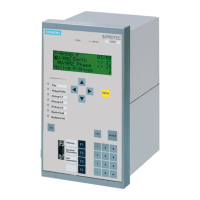
